ASUS is one of the few brands to release its ARM-based laptop with the new ASUS Vivobook S 15 S5507 featuring the Snapdragon X Elite X1E78100 processor. These new ARM-based laptops are not new in the market but what makes them special and interesting this time around is the widespread support from different brands and Microsoft’s involvement in providing an ARM-based Windows image. Let’s see how the Snapdragon X Elite CPU powers an ASUS Vivobook device.
Snapdragon X Elite CPU Platform
| ARM CPU | Qualcomm Oryon CPU | Adreno GPU | Hexagon NPU | Memory | |||||
|---|---|---|---|---|---|---|---|---|---|
| Processor | Cores | Total cache | Max Multithread frequency | Dual core boost | TFLOPS | NPU TOPS | Memory Type | Transf r Rate | |
| Snapdragon X Elite X1E-00-1DE | 12 | 42 MB | 3.8 GHz | 4.3 GHz | 4.6 | 45 | LPDDR5x | 8448 MT/s | |
| Snapdragon X Elite X1E-84-100 | 12 | 42 MB | 3.8 GHz | 4.2 GHz | 4.6 | 45 | LPDDR5x | 8448 MT/s | |
| Snapdragon X Elite X1E-80-100 | 12 | 42 MB | 3.4 GHz | 4.0 GHz | 3.8 | 45 | LPDDR5x | 8448 MT/s | |
| Snapdragon X Elite X1E-78-100 | 12 | 42 MB | 3.4 GHz | None | 3.8 | 45 | LPDDR5x | 8448 MT/s | |
| Snapdragon X Plus X1P-64-100 | 10 | 42 MB | 3.4 GHz | None | 3.8 | 45 | LPDDR5x | 8448 MT/s | |
Qualcomm released four Snapdragon X Elite CPUs with the same number of cores and cache. The main difference between the X Elite CPUs is the maximum frequencies and boost options. Frankly, we’re not impressed with Qualcomm’s CPU lineup as the differences between CPUs are artificially locked and limited by frequencies and not actual physical spec differences such as core counts, cache amount, and even features.
Our ASUS Vivobook S 15 S5507 review sample uses the lowest tier Snapdragon X Elite X1E78100 CPU paired with a 16GB LPDDR5 8448 MT/s RAM. Unlike x86-based ASUS laptops, there are no CPU, RAM, or storage variations of the Vivobook S 15. It’s the only Snapdragon and Copilot+ certified device in ASUS’ laptop lineup.
A Closer Look
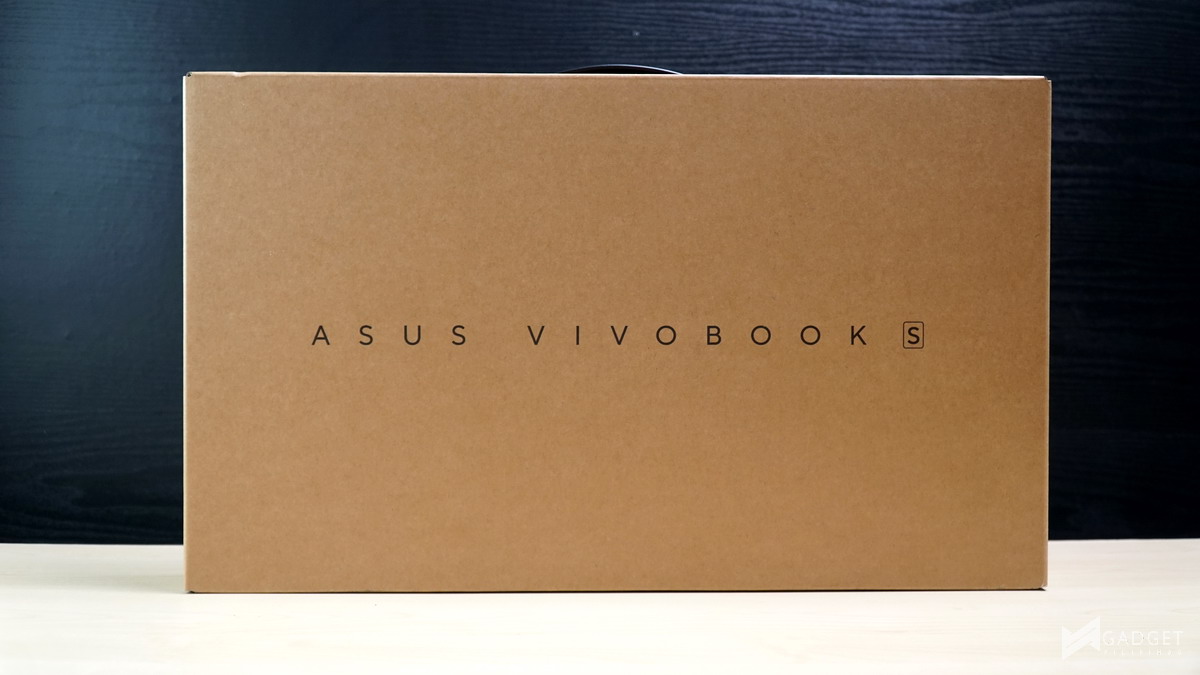
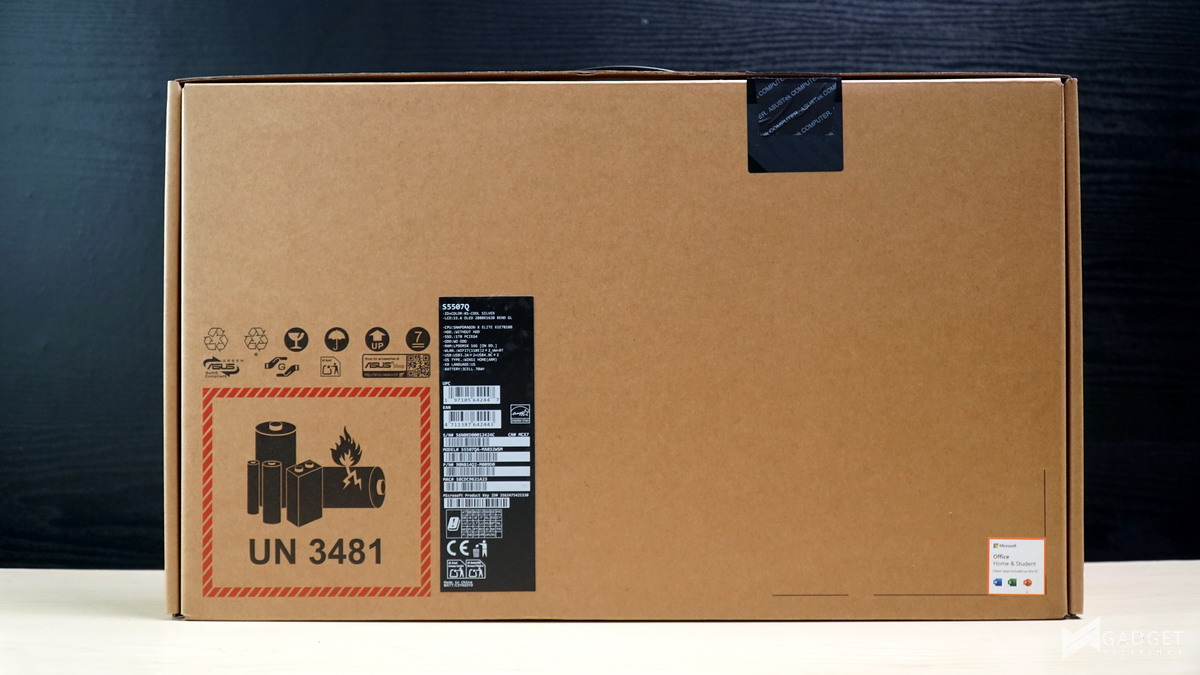
ASUSS used its traditional brown box packaging for its ARM-based laptop. There’s no Qualcomm or Snapdragon branding on the packaging unlike with we usually see with Intel or AMD-based laptops.
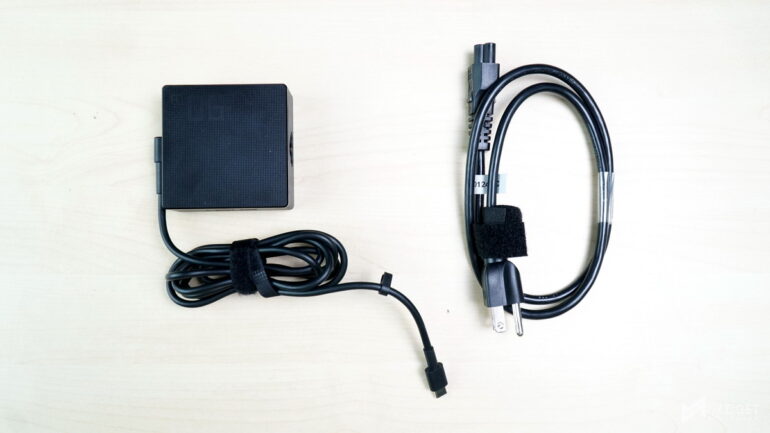
The Snapdragon X-Elite X1E78100 has a 45W TDP but ASUS included a 90w type-c adapter. Even at full speed, the laptop should be only able to pull a max of 60W so the 90W charger is definitely an overkill.
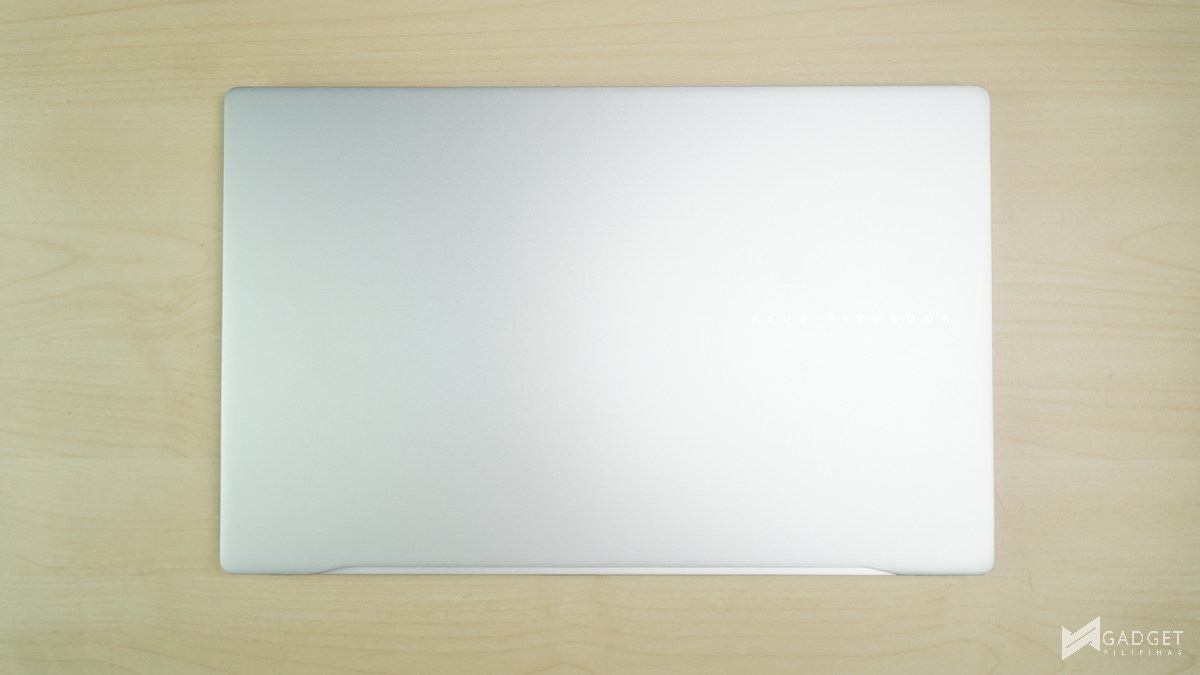
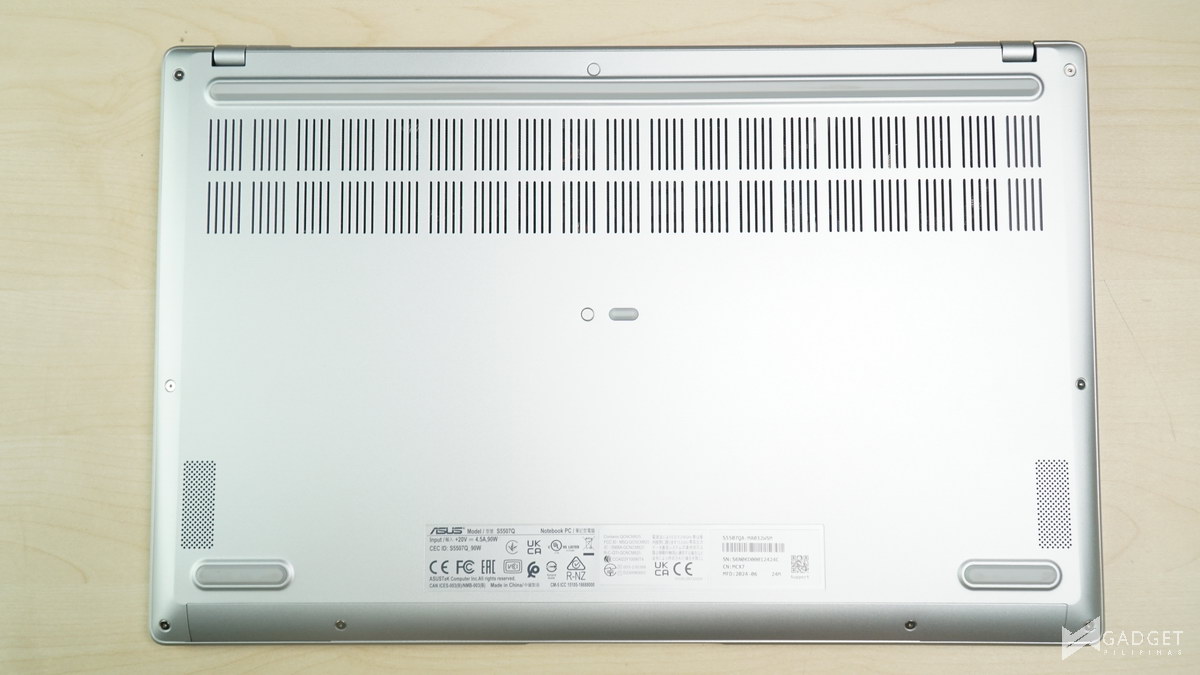
ASUS didn’t offer a unique design for its Qualcomm Snapdragon laptop as you have the same design elements found on regular Vivobook laptops.
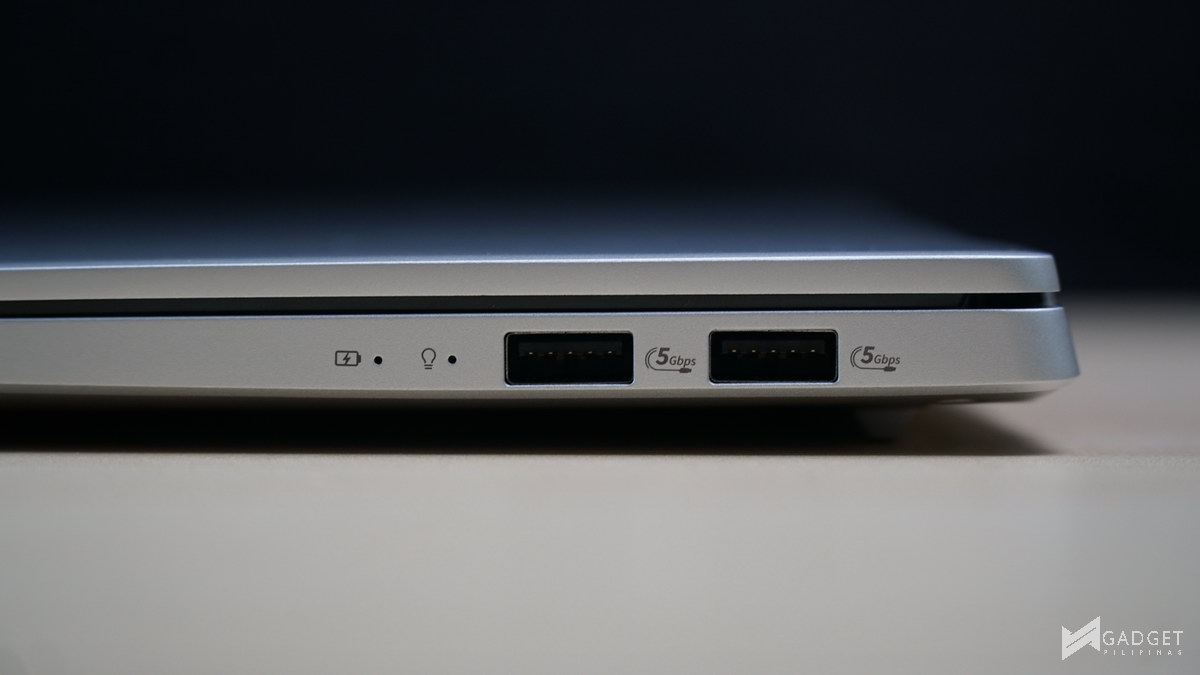
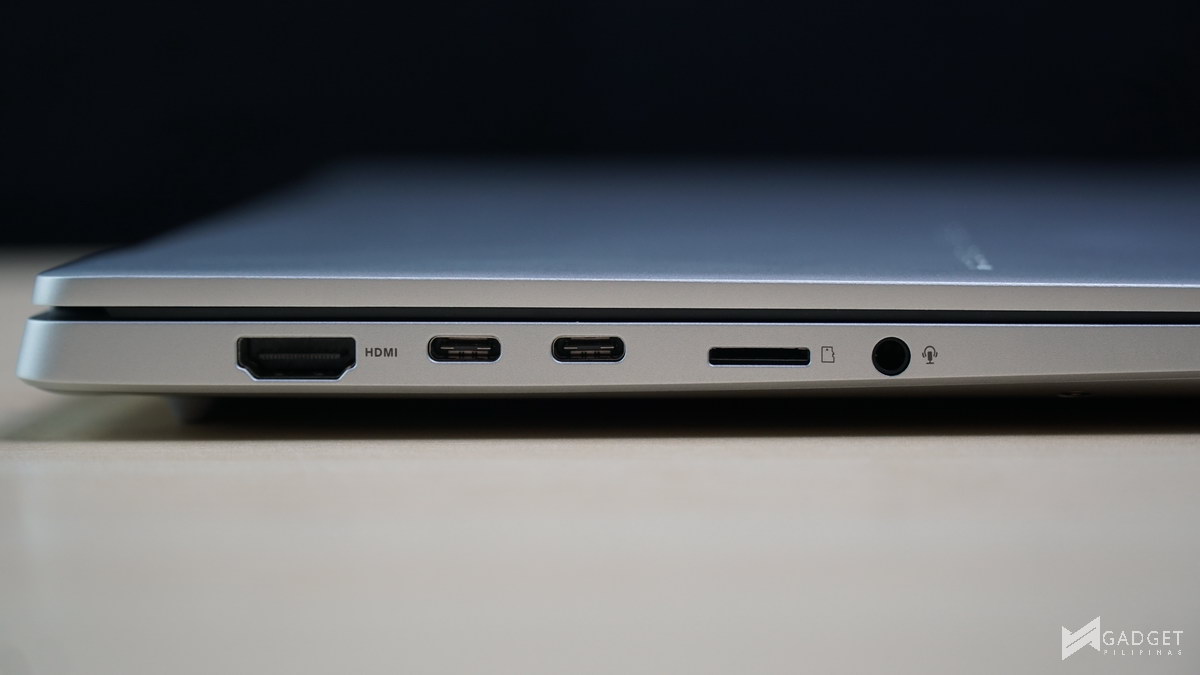
Connectivity-wise, you have a very decent I/O in terms of bandwidth but I find the placement strange as well as the choice of using a MicroSD card reader instead of a full-sized SD card as you would find on 15-inch laptops. That said, the USB Type-A and Type-C ports are usually separated on each side giving the user the freedom to populate one side first with the mix of type-C and type-A ports. On the Vivobook S 15 however, both USB 4 Type-C ports are located on the left side meaning you can only charge on the left so you have to be mindful if you’re working on a limited space.
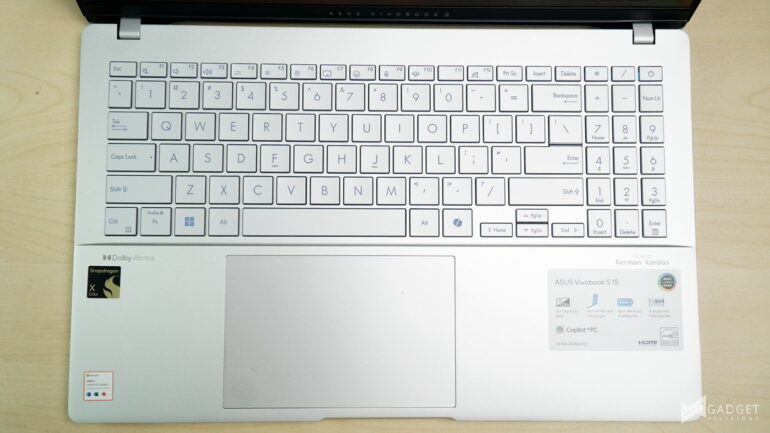
You have a standard keyboard layout for the ASUS Vivobook S 15. Surprisingly, ASUS managed to cram in a full keyboard albeit the Numpad keys are about 3/4s the size of your regular keyboard keys.



Being a Microsoft Copilot+ Certified PC, the Vivobook S 15 has a dedicated Copilot button which replaces the right control key. Pressing the Copilot button brings up the Copilot app where you can chat similar to ChatGPT.
The trackpad definitely passes the size requirement matching the size of what you would find on a Macbook. Clicks though are not as tactile as what I would expect on an ASUS Vivobook laptop. The crispiness of the clicks is dampened primarily due to the larger form factor of the trackpad.
ASUS Vivobook S 15 Display

ASUS laptop displays are definitely one of the best in the market thanks to the brand’s aggressive adaption of OLED and the Vivobook S 15 S5507 is no exception. The Vivobook S 15 S5507 boasts a 15.6-inch 2880×1620 0.2ms 120HZ OLED display. While ASUS used a high resolution, fast OLED display on its ARM-based laptop, it somehow feels “backward” due to the 16:9 aspect ratio as most laptops, even in ASUS’ very own lineup are using the 16:10 or 3:2 aspect ratio which is becoming the standard for productivity-oriented devices.
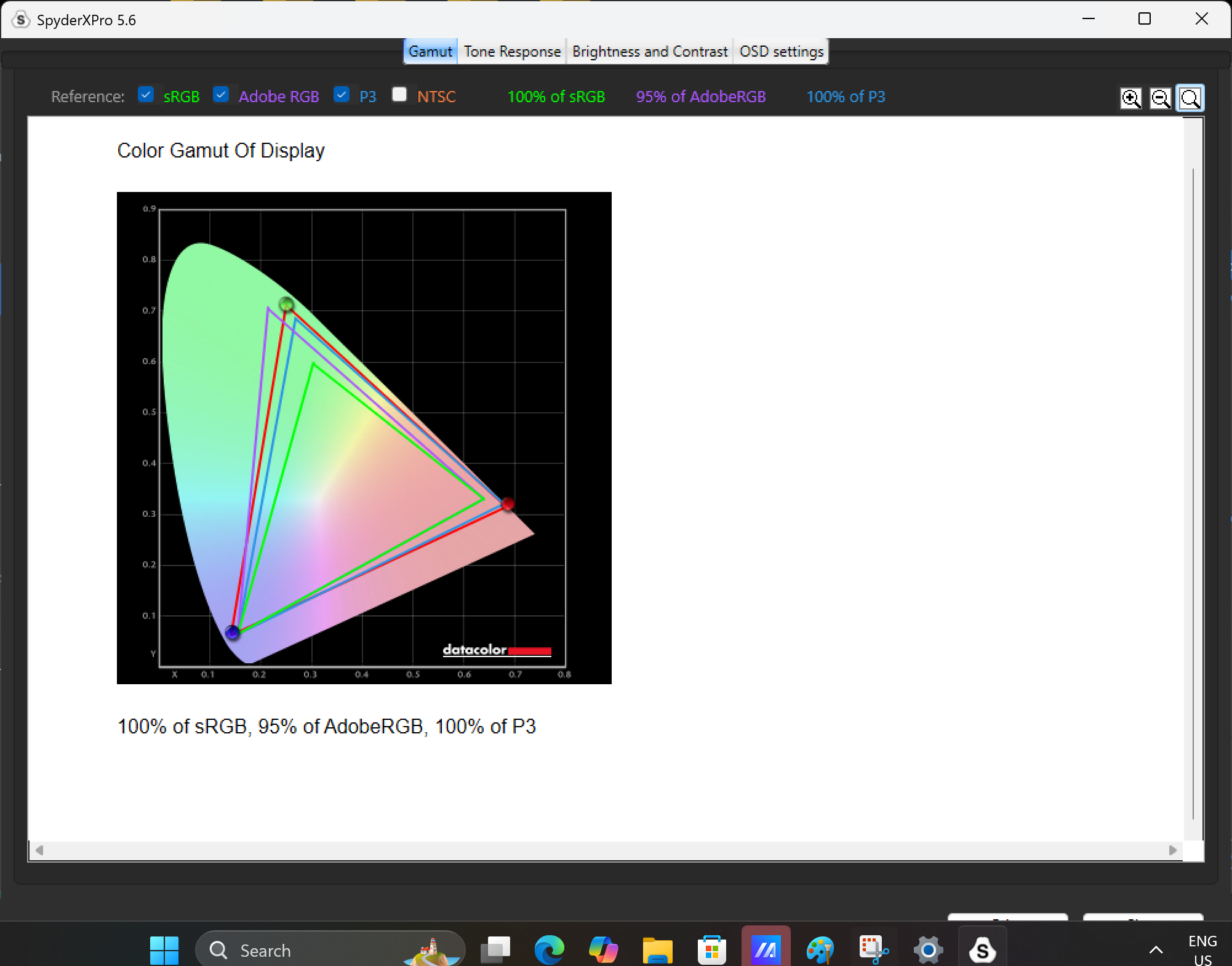
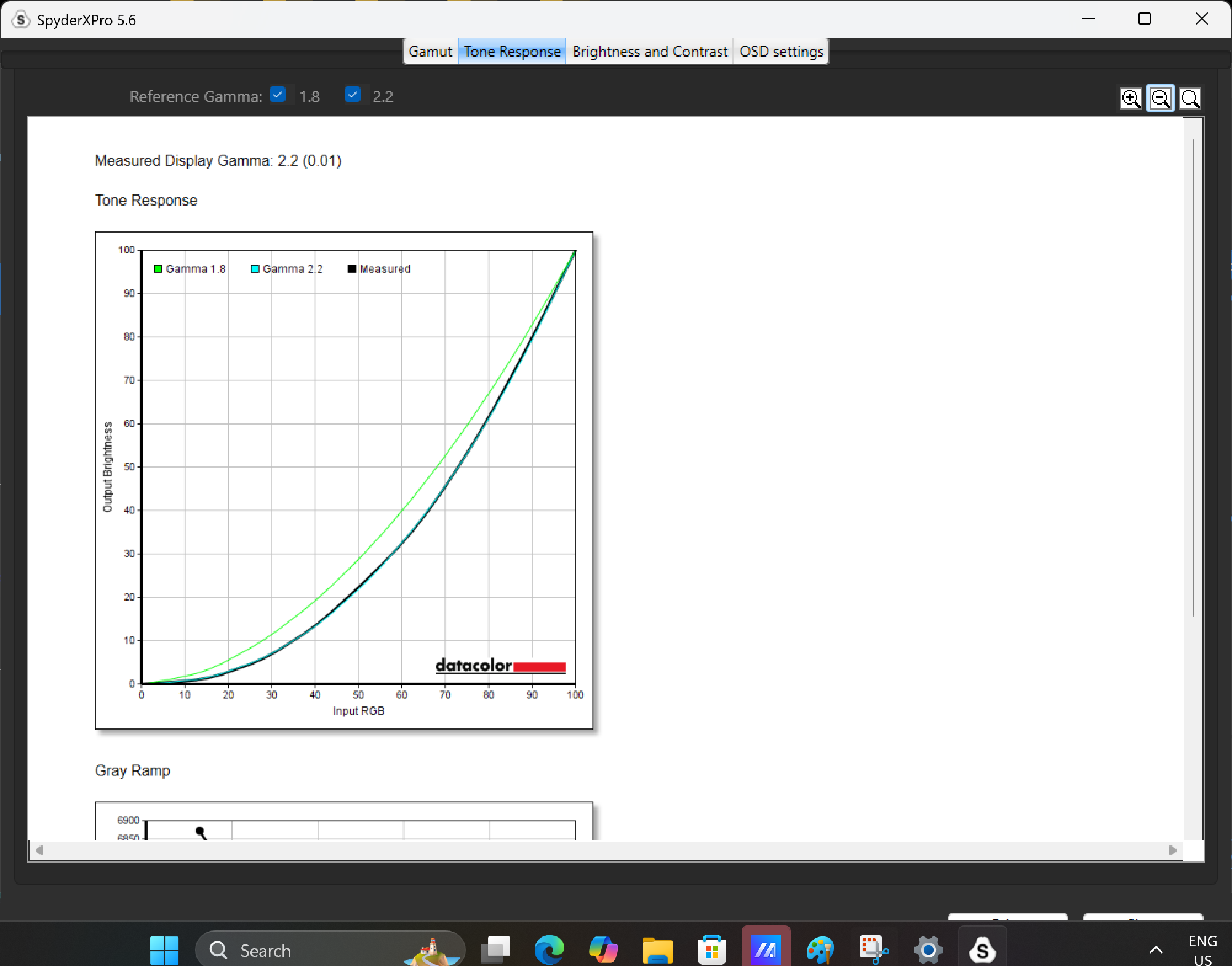
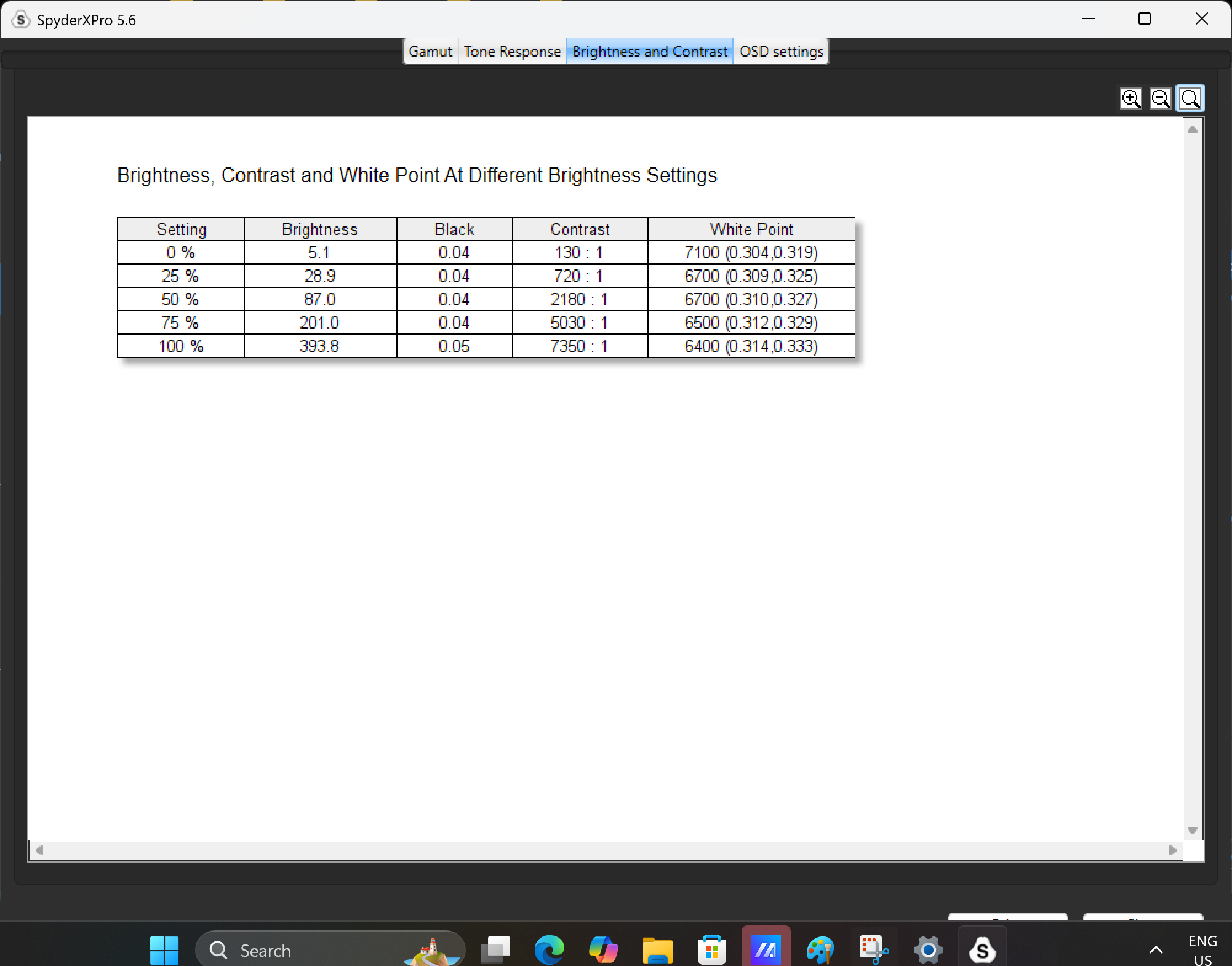
Our SpyderXPro Display Analysis tool measured 100% sRGB, 95% AdobeRGB, and 100% DCI-P3 color gamut. This makes the Vivobook S 15 S5507 a very ideal laptop for professional photo and video editing – that is if the brands such as Adobe and BlackMagic will release ARM versions of their software. Moving to the laptop’s brightness we measured a peak brightness of 393.8 nits which passes our 300-nit requirement for being able to use the laptop outdoors.
MyASUS App
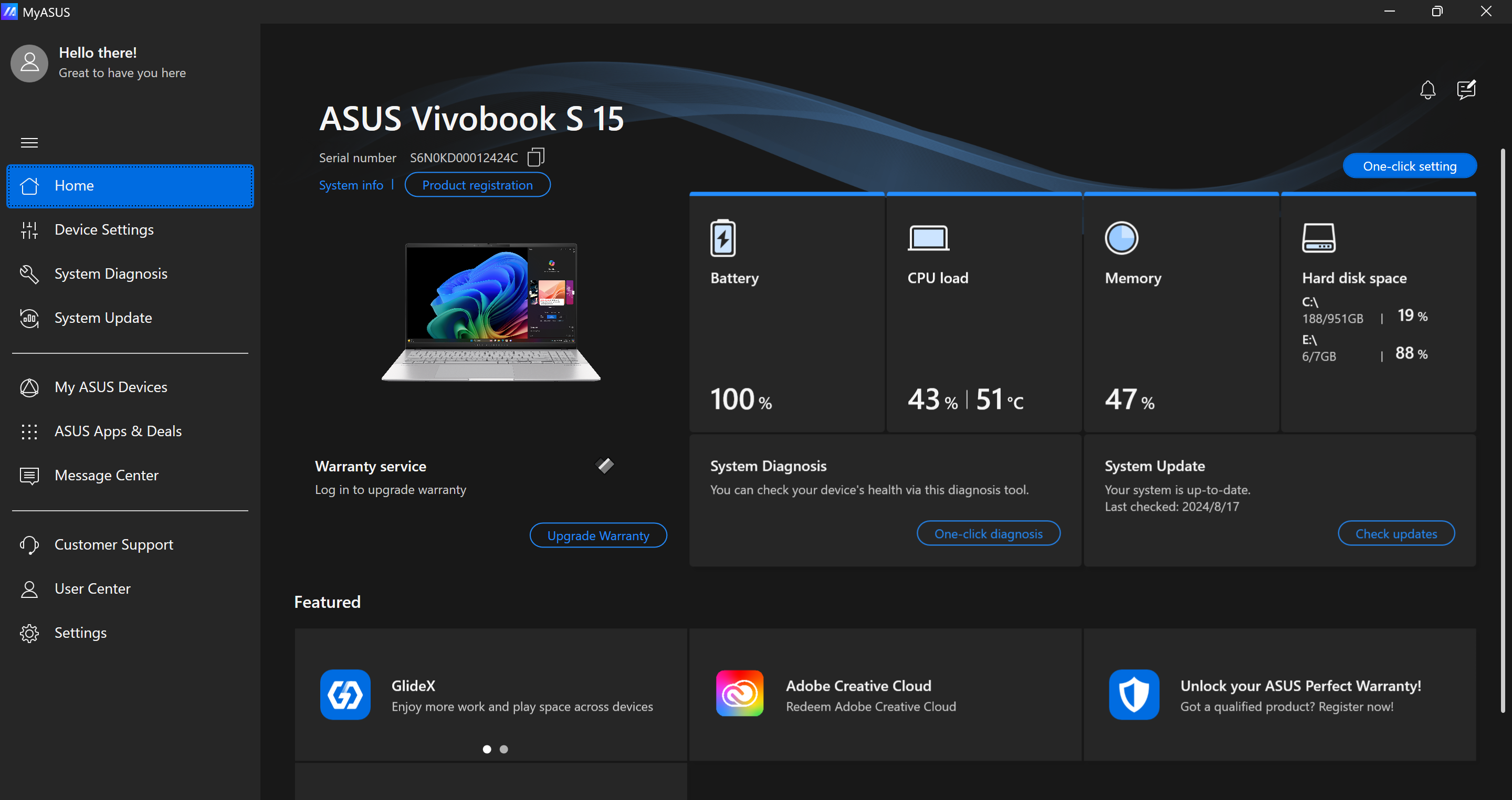
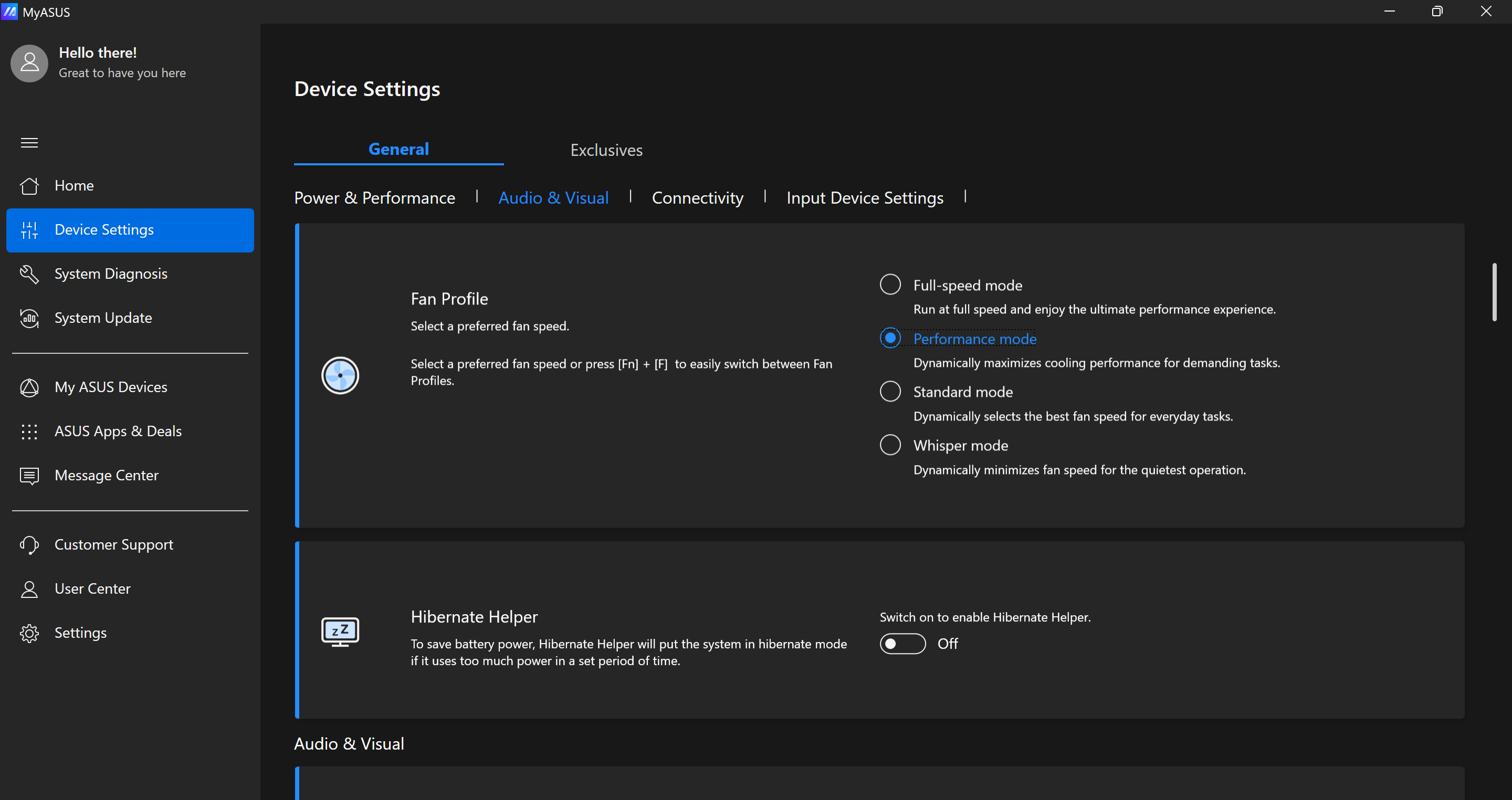
MyASUS app lets you customize the Vivobook S 15’s settings from different power profiles, display color profiles, sound profiles, and many more. The app also serves as your update hub for the device’s driver updates though you may also receive crucial updates via Windows Update.
Benchmark Setup and Test Methodology
Gadget Pilipinas’ testing philosophy is to provide detail-oriented results as accurately as possible so that our readers can replicate our tests given that these conditions are met. Different benchmarking apps and sequences are used depending on the tested component or device.
We use CapFrameX 1.7.2 Beta as our primary FPS capture and analysis tool for all our gaming benchmarks. The latest build version of Windows 11 Pro and WHQL-certified drivers are used for our benchmarks. Readings such as temperatures and power draws are recorded using HWINFO64, and OCCT Enterprise.
| MyASUS Performance Profile | Wattage (SOC, VRM, LPDDR) |
| Whisper | 20W |
| Standard (Default) | 35W |
| Performance | 45W |
| Full Speed | 50W |
We benchmarked the ASUS Vivobook S 15 S5507 together with its different power profile settings found in the MyASUS App – Whisper, Standard, Performance, and Full Speed. The main purpose of benchmarking power profiles is to show how aggressive or conservative the manufacturer is in terms of thermal management. However, unlike x86 devices, we won’t be checking the power distribution of the CPU and GPU but rather the different TDP settings of the new Snapdragon X Elite SoC.
For more information read our Benchmark Methodology article.
ASUS Vivobook S 15 Synthetic and Productivity Benchmarks
OCCT Benchmark
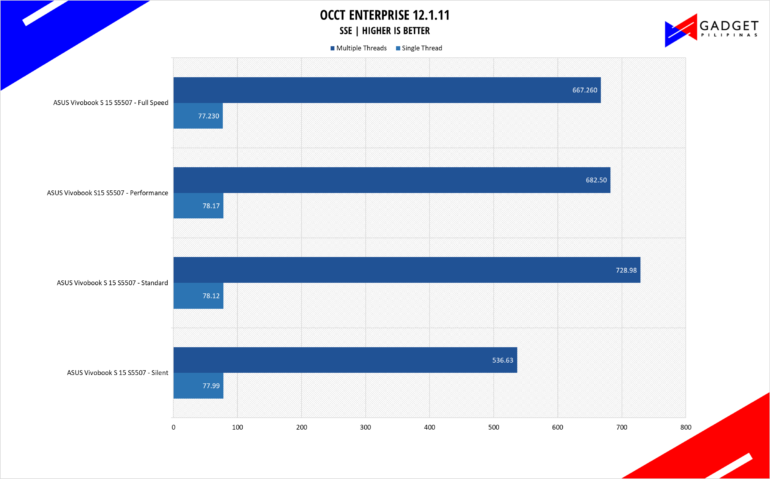
OCCT is a popular benchmark and stability testing tool among overclockers, enthusiasts and system integrators
CINEBENCH 2024 – ARM Version
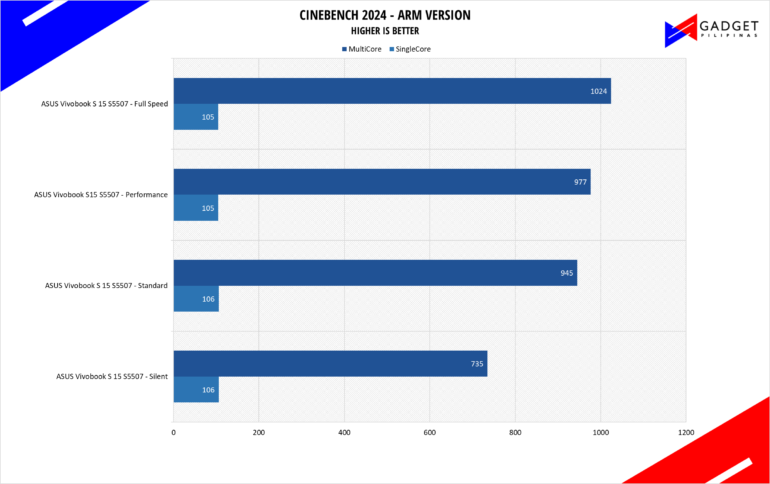
Maxon’s Cinebench benchmark is one of the most iconic benchmark applications used by reviewers and enthusiasts. The latest Cinebench 2024 uses the latest rendering architectures, including Intel’s Embree ray tracing technology and other advanced features from AMD and Intel that allow users to render the same scene on the same hard.
PCMark10 Applications
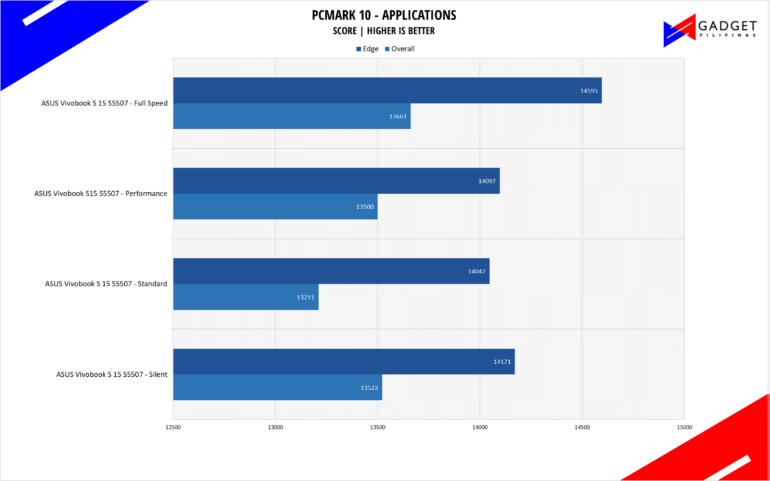
PCMark10 Applications benchmark uses Microsoft Word, Excel, PowerPoint, and Microsoft Edge to gauge performance using common applications. This is the only test available for ARM using the PCMark10 Benchmark as we couldn’t use our standard Extended benchmark which has more applications.
V-RAY 5
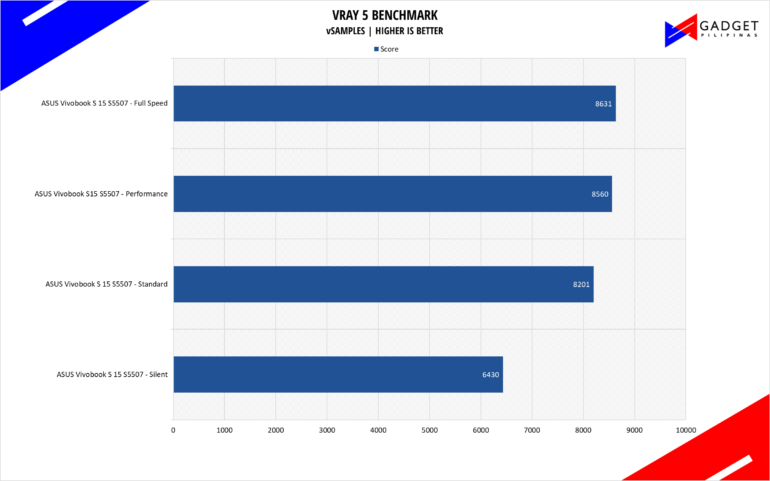
V-Ray Benchmark is a stand-alone version of V-Ray developed by Chaos Group. It is designed to test the CPU and GPU by rendering sample scenes at a fixed amount of time. V-Ray is a plug-in mostly utilized by 3D computer graphics software applications mainly for industrial design, product design, architecture, film, and video game production. V-Ray is not limited to 64 threads as it supports multi and mega-threading.
SuperPI 32M
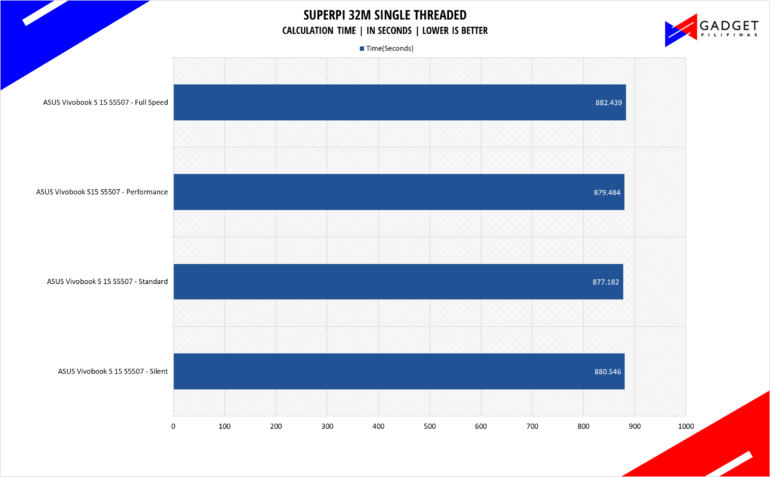
SuperPI is a single-threaded benchmark application that lets the CPU calculate Pi(π) to the nth digit. In this benchmark, we selected the Pi calculation to 32M, the highest available for the app.
wPrime 1024M
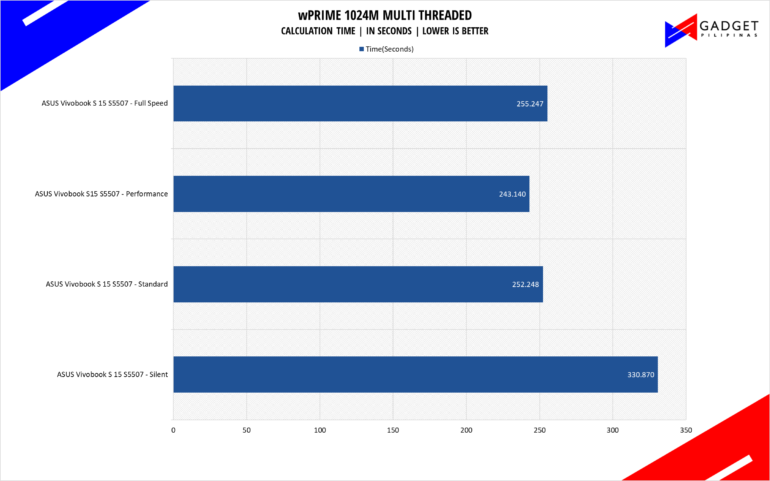
wPrime is a benchmark tool similar to SuperPI, but the former takes on finding prime numbers using Newton’s Method. The benchmark is set to calculate 1024 million prime numbers, and the performance is measured according to calculation time.
GeekBench 6.3
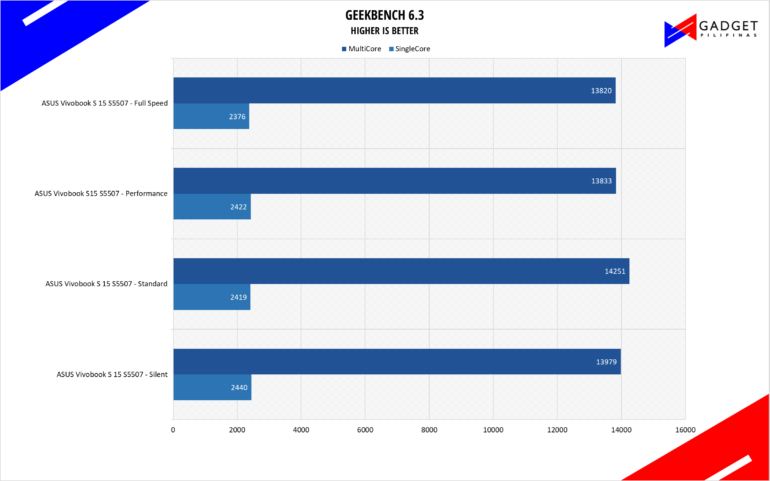
Geekbench is a multi-platform benchmark used to gauge CPU performance and compare them across Windows, Mac, and Mobile. Geekbench 6 is the latest version and doesn’t rely on memory more than the previous Geekbench 4, making it a great tool to measure both single-core and multi-core CPU performance.
CORONA RENDERER

Corona Renderer is an unbiased photorealistic render available for Autodesk 3Ds Max, Maxon Cinema 4D, and as a stand-alone application. Its popularity, similar to Blender, led Chaos Group to develop a benchmark version of the app which runs using Corona Renderer 1.3. Workstation systems, especially CPUs, can utilize Corona Benchmark as up to 72 threads can be used in the benchmark, making it very suitable for CPUs with various price segments.
BapCo CROSSMARK
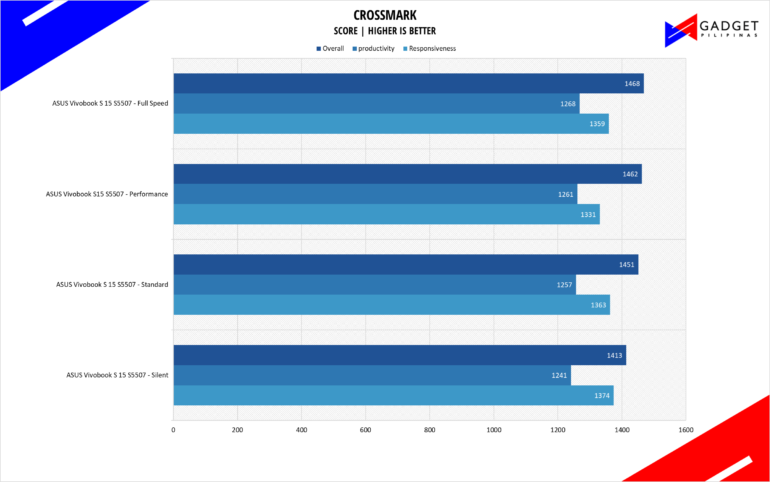
Crossmark is one of the few native cross-platform benchmark tools available for Windows, Android, Linux ChromeOS, iOS, and macOS. It measures overall system performance and system responsiveness using models of real-world applications making it a great comparison point across multiple platforms.
ASUS Vivobook S 15 SSD Benchmark
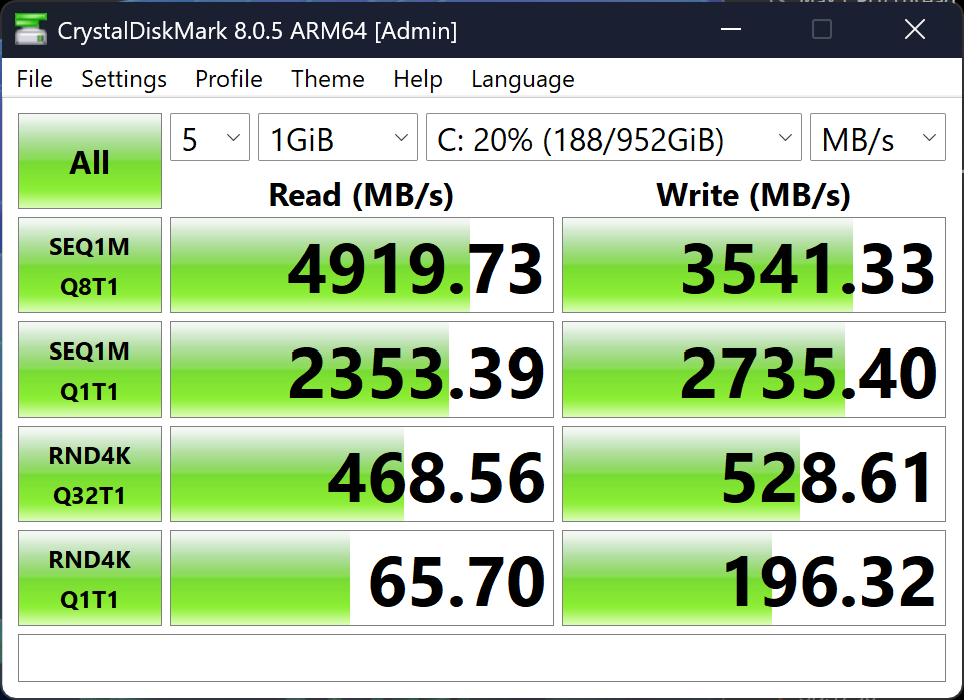
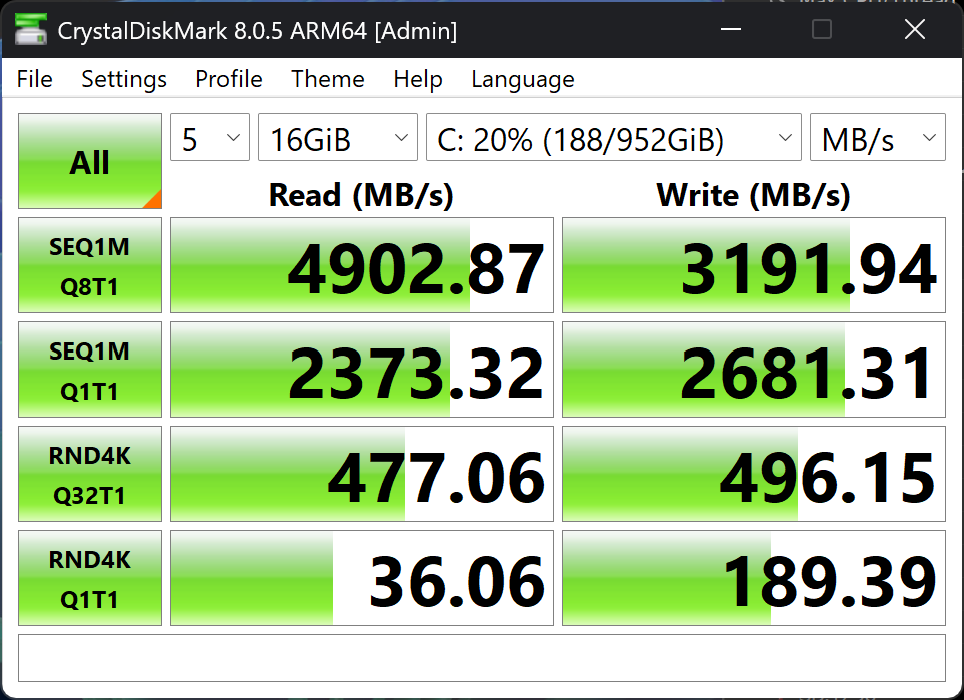
The ASUS Vivobook S15 S5507 uses a Micron 2400 MTFDKBA1T0QFM QLC SSD rated at 4,500MB/s read and 3,600 MB/s write. Given that ASUS just provided an overkill 90w charger, the choice of using a weaker QLC SSD instead of the standard WD SN560 or WD Blue SSDs found on its laptops is very questionable. We can only assume that this is due to limitations of the Snapdragon X Elite chip with higher speeds but the QLC choice could definitely be better.
Temperatures and Battery Life
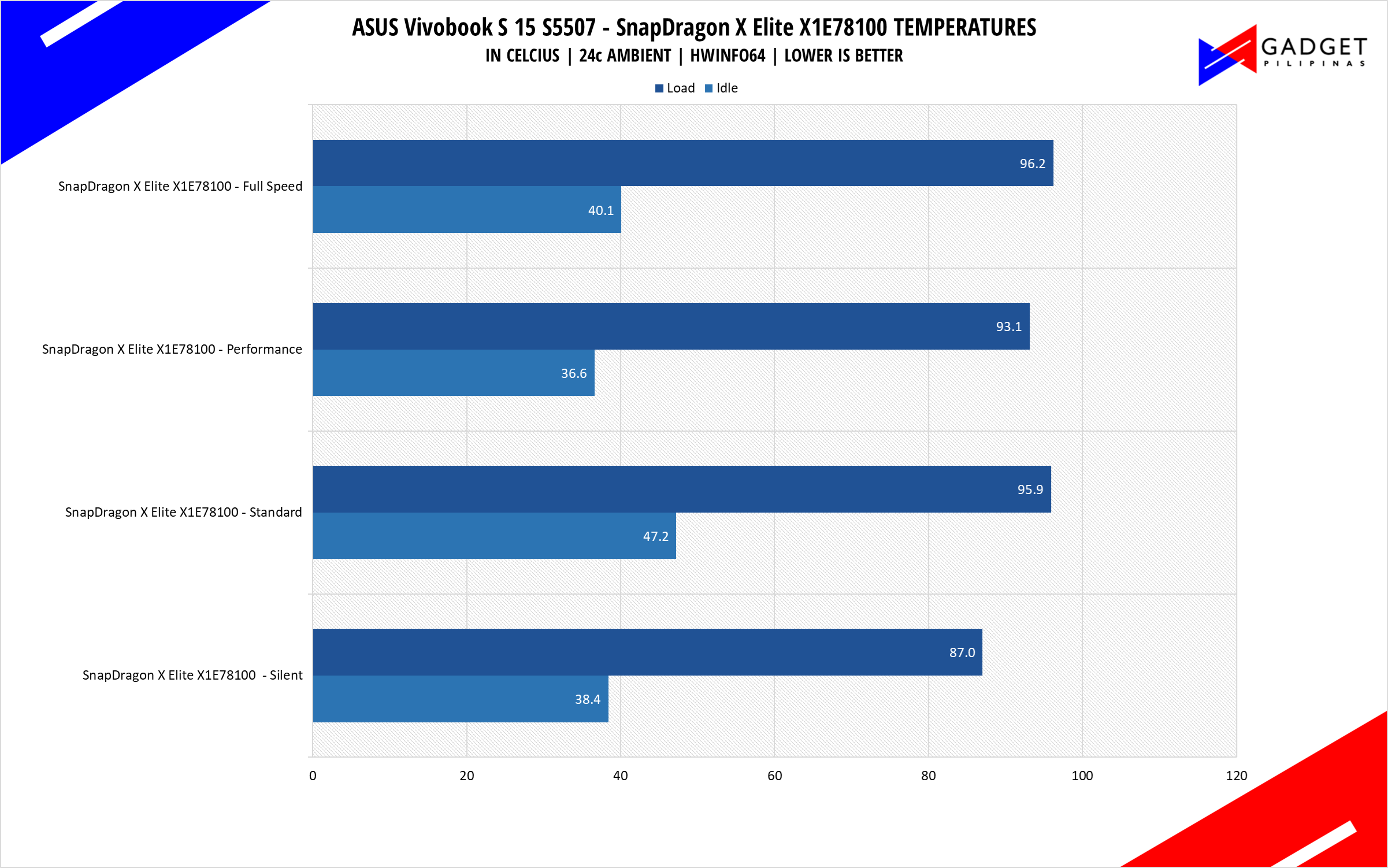
We opted to use the “Max” thermal readout on HWInfo to gauge the Snapdragon X Elite X1E-78-100’s temperatures albeit this isn’t an accurate readout as brands have pointed out. That said, it’s better to have a point of reference, especially on how the TDP profiles affect the chip.
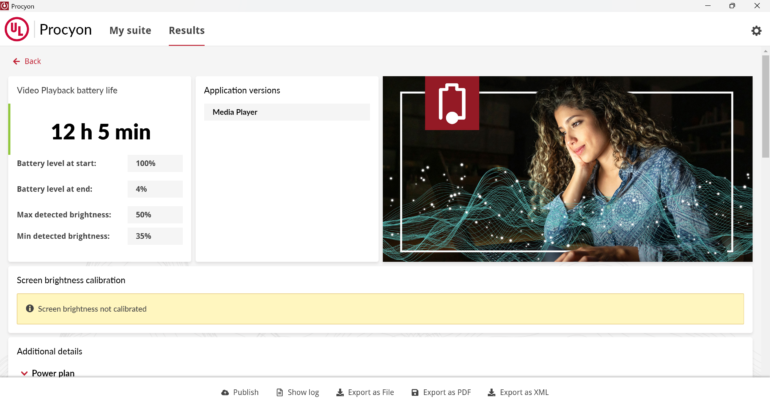
Our standard PCMark10 Battery Life test didn’t run on the S15 due to instruction set limitations so we used UL’s Procyon Video Playback test to measure the laptop’s battery life. Using the Standard profile at 50% brightness, 50% volume, and no backlight, we were able to get 12 hours of battery life with the device which is the most impressive aspect of the new Qualcomm Snapdragon X Elite chip. Considering that this is the lowest-powered CPU in the lineup, this is about as good as you could get compared to the rest of the X Elite chips with higher clock speeds and rated TDPs.
Performance Summary and Conclusion

Software Improvements
Laptops featuring the new Qualcomm Snapdragon chips have been out for quite a while and so are the reviews. Depending on how close to the launch date the reviews are, the reviews in terms of performance will greatly vary as Microsoft and Qualcomm have been aggressively pushing software updates to improve their performance. We’ve had the ASUS Vivobook S 15 S5507 for almost a month and benchmarking it is easily the toughest experience we’ve had as there are major updates every 1-3 days. Our tests usually take 3 days at max to finish so every time there’s a new update, we’ve had to discard our previous runs.
Sloppy Performance
While most of the updates greatly improved the laptop’s performance as we’ve seen the scores improve over time, some updates set the ARM CPU to perform worse than it was, at least when using specific performance profiles. The benchmarks in this review were finished just a day before the article’s publication and it shows how the Standard profile often outperforms the Full Speed profile with the Performance Profile being all over the place. It seems like the artificial limitations on clock speed impact the performance as we recorded a max clock of 3.4GHz on both Fullspeed and Standard yet the Performance profile had a peak clock speed of 4.3GHz which is well over the spec sheet.
Performance Profiles aside, the Snapdragon X Elite X1E78100’s performance feels like a modern CPU that could keep up with the latest flagship but at the same time, it feels like a smartphone CPU on steroids in other use cases. In benchmarks where the apps only require a single core, the X1E78100 seems to be on par with current Ultra devices albeit multithreaded, arithmetic, AVX, and poor emulation are its Achilles heel. When you bring back performance profiles, you’d have to switch between different profiles to get the best performance depending on the workload.
Rounding up the performance aspect to one sentence: It’s decent enough for simple day-to-day tasks like browsing, and watching but completely fumbles once you do anything complex such as rendering, or compiling to the point where it’ll make you feel like you’re using an older device. The Php 84,995 price tag is bearable until you encounter errors or BSODs trying to run a specific app.
vs the x86 Market
Considering the current market with AMD Ryzen 8000 and Intel Core Ultra devices, the Snapdragon X Elite is frankly too expensive for a first gen product with mediocre performance. The price premium isn’t because of the AI features as the whole series only has 45 TOPs which is 5 TOPs more than Microsoft’s AI PC requirements but it’s also 5 TOPs below what AMD and Intel currently offer, not to mention they run much better. The Copilot+ branding is nothing more than a marketing feature as the AI features found on the Vivobook S 15 S5507 are almost all cloud-based and other features especially improved ones require the Copilot Pro plan. Its heavily marketed AI features aren’t even locked, exclusive, and dependent on the CPU itself.
Almost every aspect of the ASUS Vivobook S 15 S5507 deserves praise – The screen, build quality, connectivity, speakers, and battery life are well deserving of its Php 84,995 price tag as you’re getting an ASUS device as you normally would with very few tradeoffs with its x86 counterparts. But when we circle back to performance and AI, the 84,995 SRP feels inflated. With the current performance of the Snapdragon SoC, I would pay a maximum of Php 64,995 considering it’s a first-generation product, but at 85k you could easily get something better in all aspects except for its battery life. That said, if you only use the basic “office” applications or do browsing, emails but need a battery that could last you more than a day, then the premium price of the S 15 S5507 is a premium worth paying for that all-day power.

Grant is a Financial Management graduate from UST. His passion for gadgets and tech crossed him over in the industry where he could apply his knowledge as an enthusiast and in-depth analytic skills as a Finance Major. His passion allows him to earn at the same time help Gadget Pilipinas' readers in making smart, value-based decisions and purchases with his reviews and guides.







